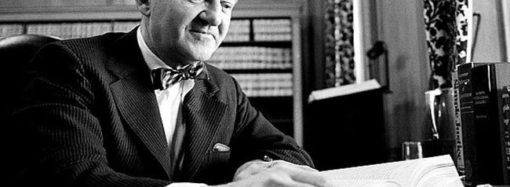Above: Supreme Court Justice Neil Gorsuch of Colorado
Seven years ago, I wrote two posts on this site (here and here) explaining some reasons for judicial activism. I emphasized that a major reason was a theory misnamed “legal realism” had taken over the nation’s law schools and insinuated its way into the courts.
“Legal realists” believe that judges make law—not just apply or find it, as traditionally understood. So the “realists” believe judges should legislate consciously and deliberately to promote “social policy” goals.
Justice Neil Gorsuch challenged this view in his concurring opinion in Loper Bright v. Raimondo, the case that overruled the “Chevron doctrine” earlier this year. He explained what common law judging actually is and drew lessons for when courts should, or should not, overrule prior cases. With most of his citations deleted, here is what he had to say:
Today, the phrase “common law judge” may call to mind a judicial titan of the past who brilliantly devised new legal rules on his own. The phrase “stare decisis” might conjure up a sense that judges who come later in time are strictly bound to follow the work of their predecessors. But neither of those intuitions fairly describes the traditional common-law understanding of the judge’s role or the doctrine of stare decisis.]
At common law, a judge’s charge to decide cases was not usually understood as a license to make new law. For much of England’s early history, different rulers and different legal systems prevailed in different regions. As England consolidated into a single kingdom governed by a single legal system, the judge’s task was to examine those pre-existing legal traditions and apply in the disputes that came to him those legal rules that were “common to the whole land and to all Englishmen.” . . . That was “common law” judging.
This view of the judge’s role had consequences for the authority due judicial decisions. Because a judge’s job was to find and apply the law, not make it, the “opinion of the judge” and “the law” were not considered “one and the same thing.” . . . . A judge’s decision might bind the parties to the case at hand. . . . But none of that meant the judge had the power to “make a Law properly so called” for society at large, “for that only the King and Parliament can do.” . . .
Other consequences followed for the role precedent played in future judicial proceedings. Because past decisions represented something “less than a Law,” they did not bind future judges. . . . At the same time, as Matthew Hale [England’s leading writer on criminal law] put it, a future judge could give a past decision “Weight” as “Evidence” of the law. . . . Expressing the same idea, William Blackstone [England’s foremost legal textbook writer – ed.] conceived of judicial precedents as “evidence” of “the common law.” . . . And much like other forms of evidence, precedents at common law were thought to vary in the weight due them. Some past decisions might supply future courts with considerable guidance. But others might be entitled to lesser weight, not least because judges are no less prone to error than anyone else and they may sometimes “mistake” what the law demands. . . . In cases like that, both men thought, a future judge should not rotely repeat a past mistake but instead “vindicate” the law “from misrepresentation.” . . .
When examining past decisions as evidence of the law, common law judges did not, broadly speaking, afford overwhelming weight to any “single precedent.” . . . Instead, a prior decision’s persuasive force depended in large measure on its “Consonancy and Congruity with Resolutions and Decisions of former Times.” . . . An individual decision might reflect the views of one court at one moment in time, but a consistent line of decisions representing the wisdom of many minds across many generations was generally considered stronger evidence of the law’s meaning. . . . With this conception of precedent in mind, Lord Mansfield [England’s greatest chief justice – ed.] cautioned against elevating “particular cases” above the “general principles” that “run through the cases, and govern the decision of them.” . . . By discarding aberrational rulings and pursuing instead the mainstream of past decisions, he observed, the common law tended over time to “wor[k] itself pure.” . . .Reflecting similar thinking, Edmund Burke [a leading 18th century parliamentarian and philosopher] offered five principles for the evaluation of past judicial decisions: “They ought to be shewn; first, to be numerous and not scattered here and there;—secondly, concurrent and not contradictory and mutually destructive;—thirdly, to be made in good and constitutional times;—fourthly, not to be made to serve an occasion;—and fifthly, to be agreeable to the general tenor of legal principles.









